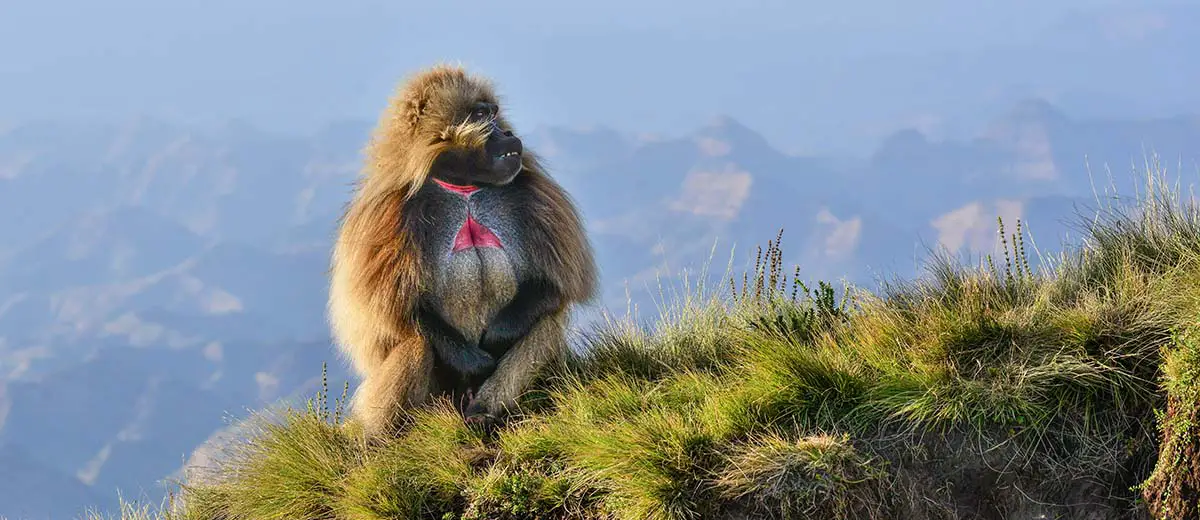30 Greatest National Parks in the World
There are now over 4,000 national parks worldwide, all founded to preserve the greatest spectacles of the natural world. Collectively, they showcase the world’s most incredible wildlife as well as some of the most interesting geological formations and, in some cases, important man-made structures. These protected areas cover almost every imaginable setting from the mountainous peaks of the Himalayas to the coastal rainforests of Costa Rica.
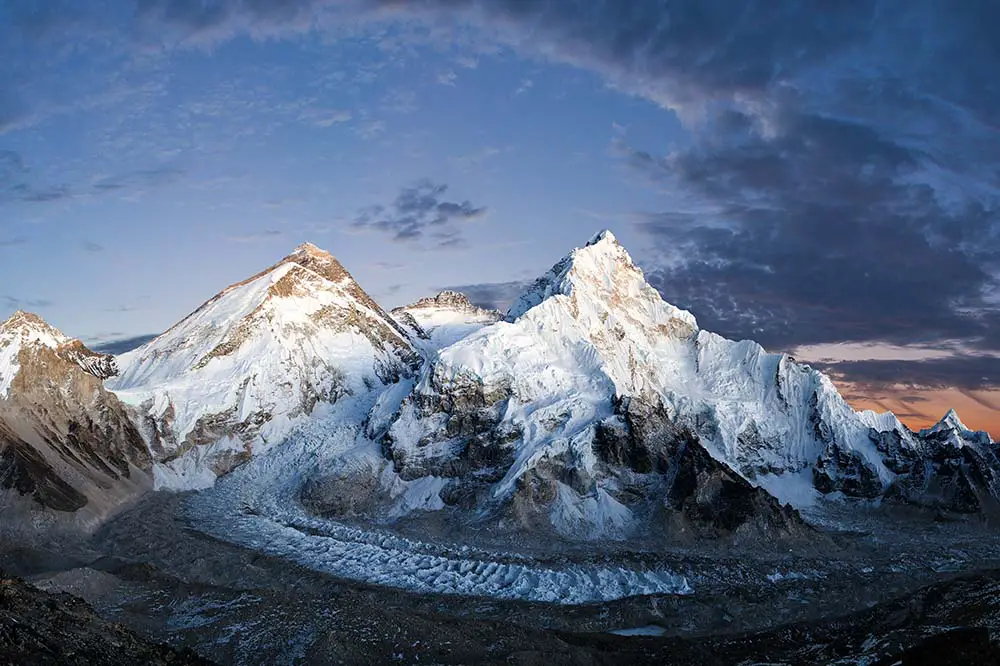
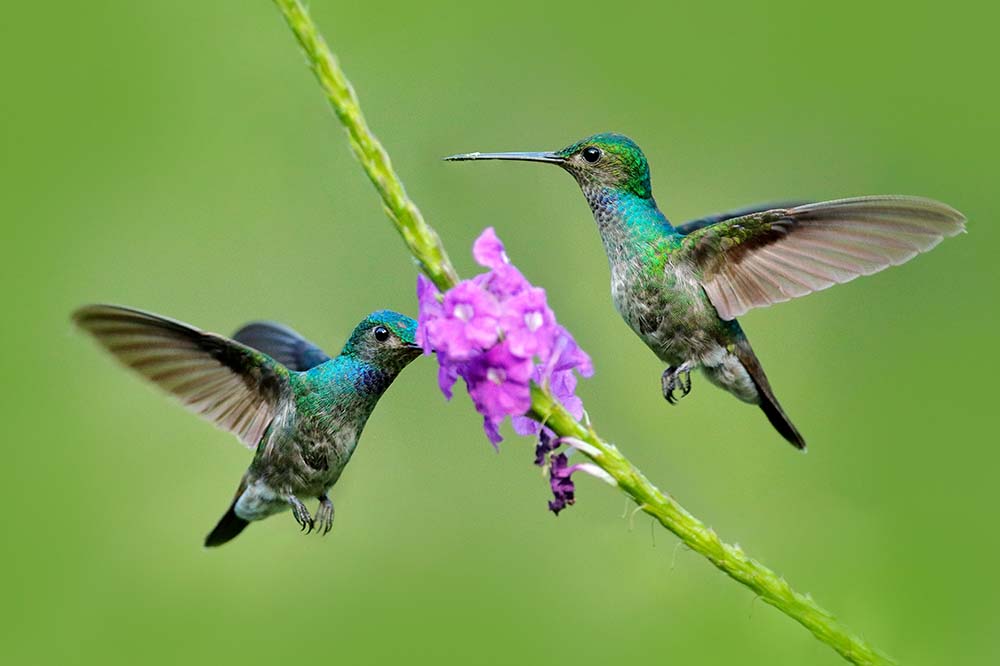
Left: Mount Everest, Lhotse and Nuptse from Pumori base camp, Khumbu valley, Sagarmatha National Park, Nepal | Daniel Prudek / Shutterstock & Right: Pair of Charming Hummingbirds found in Manuel Antonio National Park, Costa Rica | Ondrej Prosicky / Shutterstock
Contents
- Galapagos National Park, Ecuador
- Pantanal Matogrossense National Park, Brazil
- Los Glaciares National Park, Argentina
- Virunga National Park, DRC
- Kruger National Park, South Africa
- Lake Nakuru National Park, Kenya
- Simien Mountains National Park, Ethiopia
- Timanfaya National Park, Lanzarote
- Plitvice Lakes National Park, Croatia
- Bavarian Forest National Park, Germany
- Vatnajökull National Park, Iceland
- Lake District National Park, UK
- Abisko National Park, Sweden
- Calanques National Park, France
- Göreme National Park, Turkey
- Sagarmatha National Park, Nepal
- Ranthambore National Park, India
- Gobi Gurvan Saikhan National Park, Mongolia
- Guilin and Lijiang River National Park, China
- Fuji Hakone Izu National Park, Japan
- Hundred Islands National Park, Philippines
- Khao Sok National Park, Thailand
- Bromo Tengger Semeru National Park, Indonesia
- Uluru-Kata Tjuta National Park, Australia
- Fiordland National Park, New Zealand
- Rapa Nui National Park, Chile
- Manuel Antonio National Park, Costa Rica
- Tikal National Park, Guatemala
- Tulum National Park, Mexico
- Jasper National Park, Canada
1 – Galapagos National Park, Ecuador
Our journey into the world of national parks starts on a remote archipelago in the Pacific Ocean, 1,000 km from mainland South America. Galapagos National Park was established in 1959 as Ecuador’s first national park. It is one of the most renowned locations for wildlife, sporting one of the highest percentages of endemic species. Sitting atop the Galapagos hotspot, the volcanic landscape of the islands is just as impressive as their inhabitants. Wolf volcano has erupted several times over the last decade, most recently in January 2022. Considering its position on the equator, the climate of the Galapagos is unusually cool thanks to an ocean current known as the Peru or Humboldt current. This current transports cool, nutrient-rich water from Antarctica up the west coast of South America before turning west at the equator where it runs into the Galapagos Islands. The archipelago sits at the intersection of three large ocean currents creating a tremendous amount of biodiversity. But it’s not just marine life that thrives here; on land, gigantic Galapagos tortoises slowly traverse the terrain alongside iguanas and many other types of reptile. The park also plays host to colonies of fur seals and sea lions who enjoy the warm sands of the islands’ shores.

2 – Pantanal Matogrossense National Park, Brazil
Our next stop is found 4,000 km southeast, in Brazil, where the largest tropical wetland on the planet exists. Pantanal Matogrossense National Park is another area revered for its biodiversity and, like Galapagos, is a UNESCO World Heritage Site, inscribed in the year 2000. The national park is a relatively small section of the larger Pantanal region; this gently sloped basin floods from October to March and drains during the dry season from April to September. The Pantanal contains one of the world’s highest concentrations of Jaguars, the largest felines in the Americas, who are known to be excellent swimmers and are often found near water where they prey upon caiman, capybara, tapirs and many other types of animal. Capybara is another species that thrive in areas with lots of water; they are the world’s largest rodent species and can be found grazing in the Pantanal alongside South America’s largest cervid, the Marsh deer, which can weigh almost 300 lbs (275 lbs / 125 kg). Families of giant otters play and hunt in the waters here alongside caiman and anacondas. Birdlife is also abundant in the Pantanal, with over 600 species calling this region their home.
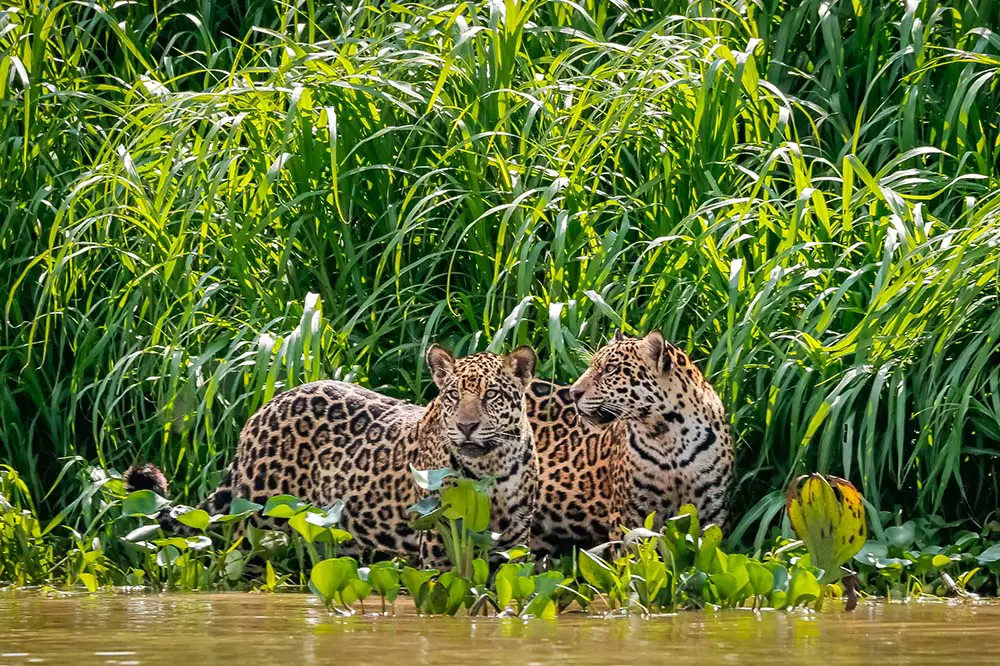
3 – Los Glaciares National Park, Argentina
The Andes Mountain Range runs along the western side of the continent and terminates in one of the most admired regions in the world, Patagonia. At the southern end of this range, Argentina’s Los Glaciares National Park features some of the most recognisable mountains in South America. The park’s most iconic peak is Mount Fitz Roy, which is made from granite and rises to just over 3,400 m (3,405 m / 11,155 ft). This mountain looks particularly magnificent at sunrise as the sun casts shades of yellow and red against its tall grey towers. These mountains are home to a large collection of glaciers from which the park derives its name. The most well known of these glaciers is Perito Moreno, which is named after the Argentine explorer Francisco Pascasio Moreno; Perito in Spanish meaning expert. Perito Moreno sits in front of Lake Argentino and supplies the lake with a constant source of fresh water. We’ll learn more about glaciers later on in Iceland. There are over 100 registered bird species in Los Glaciares including the Magellanic woodpecker and the eye-catching many-coloured rush tyrant, which is sighted infrequently in the humid areas of the park.
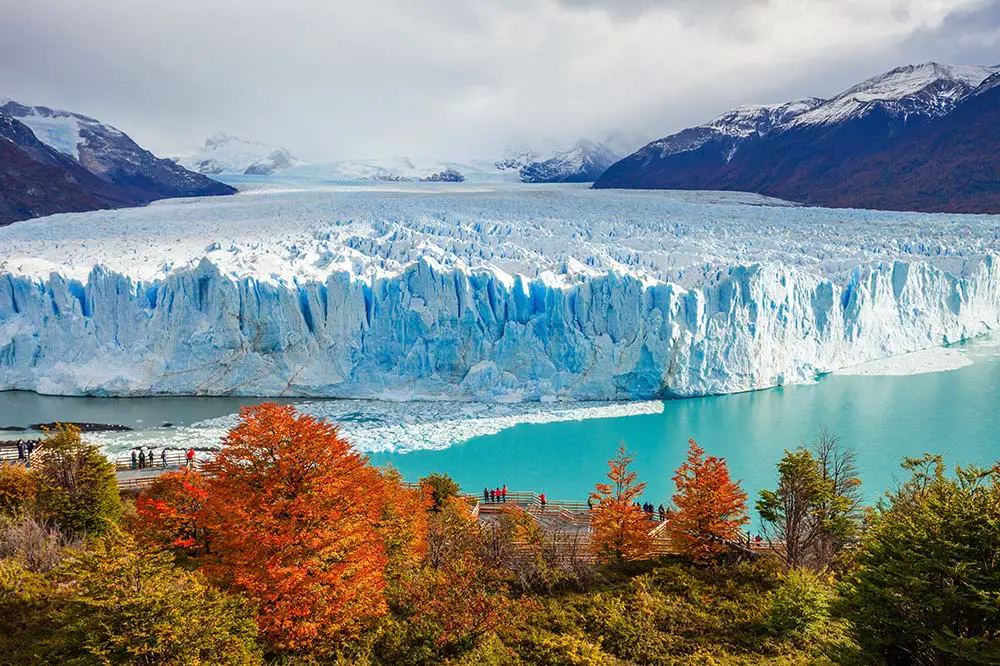
4 – Virunga National Park, DRC
The South Atlantic Ocean separates the continents of South America from Africa where one of the most mysterious rainforests is found. Virunga National Park is located in far-eastern Democratic Republic of Congo and is home to the largest primates in the world. The gorillas of Virunga are known as mountain gorillas, which are one of two subspecies of eastern gorilla; the western gorilla, found on the western side of the continent also has 2 subspecies. Mountain gorillas are perhaps most unique from all other subspecies by their group structure; most gorilla troops are made up of one dominant male, known as a silverback, and between 3-6 females with their young. Troops of mountain gorillas are much larger, containing up to 8 silverbacks, although there is still a hierarchy with one dominant male who leads the group. Eastern gorillas are critically endangered with less than 3,000 remaining in the wild. This area is also home to other endangered species such as the common chimpanzee, the closest relative to humans, and the Okapi, the closest relative to the giraffe. Virunga National Park is named after the Virunga mountain range, which is nothing short of breathtaking and is home to 2 active volcanoes. Nyiragongo features the world’s largest lava lake and is known for its violent eruptions, last erupting in May 2021 when the lava reached the outskirts of Goma, a city that sits just 10km from the summit.
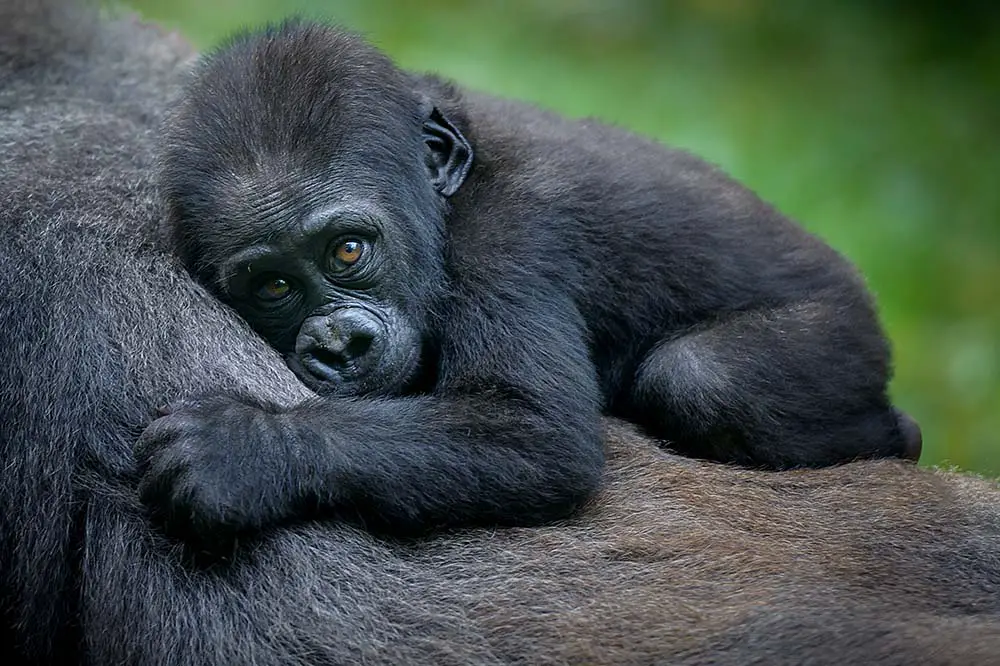
5 – Kruger National Park, South Africa
Roughly 2,500 km due south from Virunga, sits one of South Africa’s most famous parks, housing the savannah’s most infamous predators. At roughly 20,000 square kilometres, Kruger National Park is one of Africa’s largest and boasts one of the most impressive collections of wildlife on the continent. In addition to many other species, Kruger is home to the “Big 5”, a group of animals that gets its nickname from a term that game hunters used to describe the 5 most difficult animals to hunt on foot. The largest of the 5, the African bush elephant is the largest terrestrial mammal on earth and also has the longest gestation period; females give birth after around 650 days, which is well over twice that of a human. The second largest of the group is the black rhinoceros, which are critically endangered with just over 3,000 remaining in the wild. African buffalos can be seen roaming the park in herds of up to 500, banding together to protect themselves from another big-5 member and the largest feline on the continent. A survey in 2011 estimated close to 1,800 lions in Kruger National Park. Researchers did this by playing the distress call of a buffalo calf over a loudspeaker at various locations in the park and counting the number of lions that showed up These gigantic cats can be up to four times the size of Leopards, an elusive and agile cat who often hoist their prey into trees to avoid other predators such as lions.
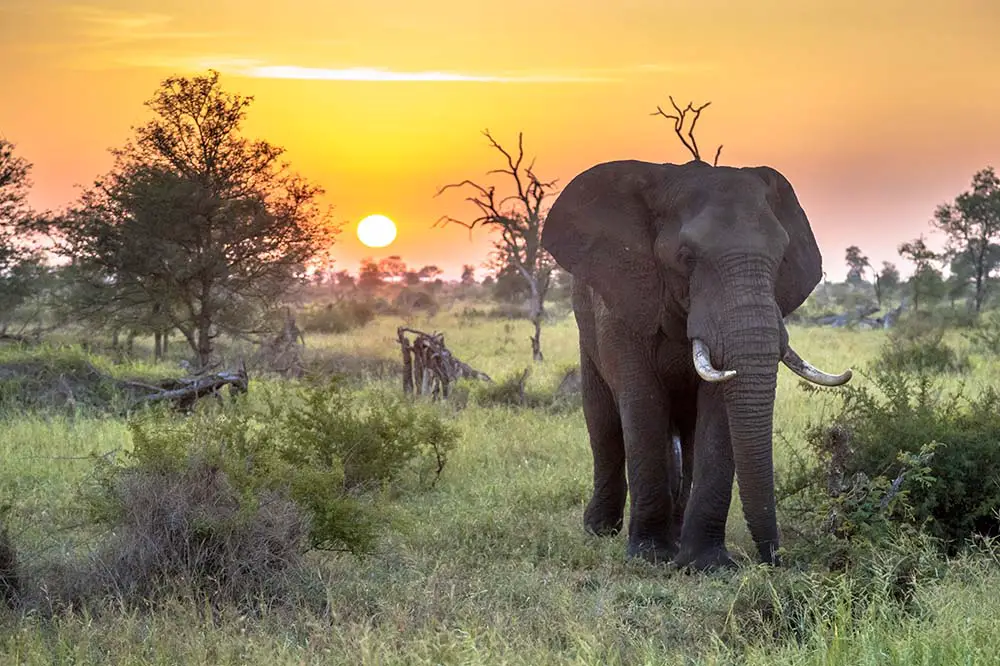
6 – Lake Nakuru National Park, Kenya
There are many national parks in Africa that feature the classic safari animals but few as unique as the next on our journey found 2,600km north in central Kenya. Lake Nakuru National Park may not boast the largest, deepest, or most visually alluring lake in the world but thanks to its algae-rich alkaline waters, is home to some of the most incredible birdlife on the planet. Nakuru is one of three lakes that make up the Kenya Lake System in the Great Rift Valley, a UNESCO World Heritage Site and an important foraging location for the park’s most well-known residents, lesser flamingos. These birds are highly social and live in large flocks; up to 4 million lesser flamingos can be found throughout Kenya’s lake system and fly from lake to lake in search of food. Nakuru National Park is not only famous for its flamingos, there are over 400 bird species in the area including great white pelicans who use the park as an important breeding ground. Waterbucks are another interesting species that call the park their home; the males of the species are larger and have long spiral horns.
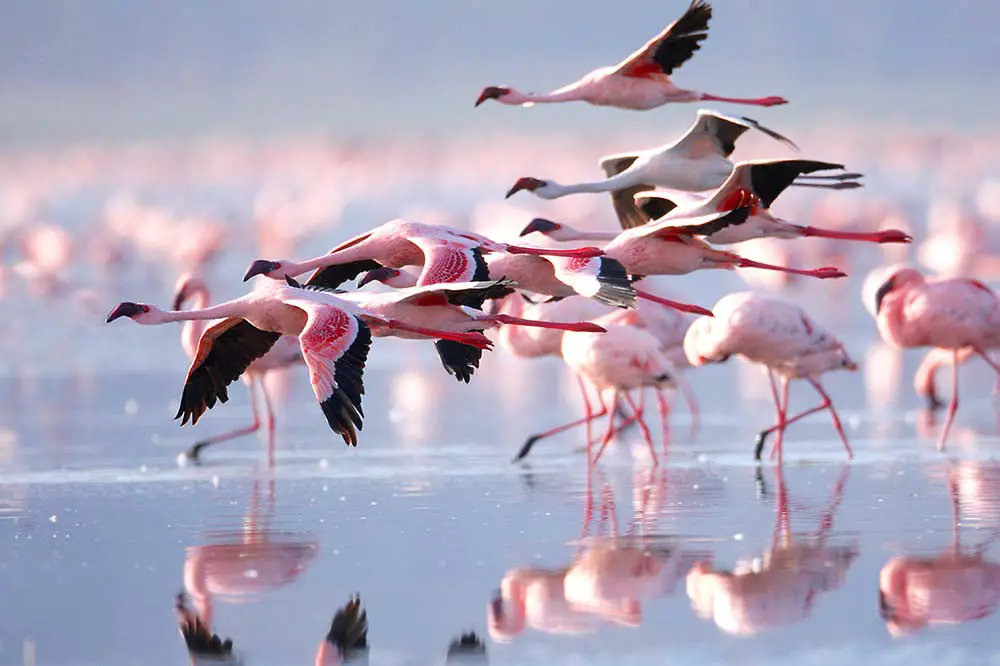
7 – Simien Mountains National Park, Ethiopia
To Kenya’s north sits Ethiopia; although this country doesn’t contain the highest peak, it is the most mountainous country in Africa and contains a particularly beautiful national park found at the northern tip of the Ethiopian Highlands. The landscape at Simien Mountains National Park was shaped over millions of years as the Ethiopian plateau eroded away creating deep valleys with steep cliffs and tall mountainous peaks. The high-altitude terrain here is noticeably green and supports several fascinating species; The Gelada baboon is a medium-sized old-world monkey found only in the alpine grassland areas of the Ethiopian Highlands. They are also known as the bleeding-heart baboon thanks to an hourglass-shaped hairless patch on their chests revealing bright red skin. The males of the species exhibit long hair on their head and shoulders and onto their back, not too dissimilar to the mane of a lion. The Ethiopian wolf is another species endemic to the highlands and is critically endangered with estimates as low as 200 remaining in the wild. They have a striking red and white coat and are found in packs of up to 13 individuals. The Walia ibex is also endangered with less than 600 individuals remaining and has an even smaller range, found only in the Simien Mountains with almost all of them located in the national park. They live only at high altitudes where they graze on grasses, herbs, lichens and similar vegetation.

8 – Timanfaya National Park, Lanzarote
Our last stop in Africa before heading to the European continent sits 150 km from mainland Morocco on the Spanish island of Lanzarote. The views at Timanfaya National Park can best be described as otherworldly and is often compared to the landscape on Mars. It is home to a collection of incredible red, orange and black volcanoes and although the last significant activity occurred 200-300 years ago, hotspots are still present in the park and can reach over 100°C (212°F) at the surface and 600°C (1112°F) just 13 m deep. Besides the volcanoes are long stretches of jagged lava fields, which further add to the park’s mystique. Timanfaya also has a long north-facing coastline where the rich red and dark black volcanic soils contrast sharply with the deep blue sea. As you might expect, this national park is not famous for its flora or fauna, however, there is life that abides in this rugged terrain. Over 100 species of lichen grow on the rocks here and the park is home to one of the most unique vineyards in the world.

9 – Plitvice Lakes National Park, Croatia
The warm waters of the Mediterranean separate Africa from the European continent, which is home to some of the most unique national parks in the world. The landscape at Plitvice Lakes National Park is one of the most recognisable in all of Europe. It is referred to as a karst landscape, which is created when the bedrock, in this case, limestone with inserts of dolomite, erodes over time creating springs, caves, sinkholes, sinking streams and other features. The lakes here are formed by tufa barriers; as per the park’s website, tufa is a hollow, porous rock created from the deposition of dissolved calcium carbonate in the water by plants, algae and mosses. These barriers are constantly growing and create many of the picturesque cascades that the park is known for as the water passes from one lake to another. It is this combination of karst landscapes and tufa barriers that makes Plitvice so special. Although not its most well-known feature, the wildlife of the park is also impressive; perhaps most surprisingly, Plitvice Lakes is home to two venomous snake species including the Nose-horned viper, over 300 species of butterfly including the Jersey tiger and many species of bird including the Eurasian pygmy owl.

10 – Bavarian Forest National Park, Germany
Plitvice is Croatia’s oldest national park, 500 km northwest lies Germany’s oldest, which showcases some of Europe’s largest predators. Bavarian Forest National Park is home to the Eurasian Lynx; the largest feline on the continent which were reintroduced to the park in the 1980s. These agile creatures are mostly solitary with the exception of mother and cubs, which are usually born in a litter of 2-3 and won’t reach independence until 10 months of age. Being the largest of the 4 lynx species, these cats prey on larger animals such as roe or musk deer. Another of the park’s large predators is the grey wolf, these canids are twice the size of the lynx and also have double the offspring, with the average litter size of 6 pups. Wolves will prey on ungulates such as deer as well but will also eat smaller animals such as beavers and rabbits, which are present in the park. One of the most interesting bird species here is the capercaillie; the males of the species exhibit a majestic green chest and fancy red eyebrows. The Bavarian Forest is also stunning in its own right and contains swaths of spruce, beech and fir trees as well as a large network of streams and lakes filled with ice-cold water from the surrounding mountains.
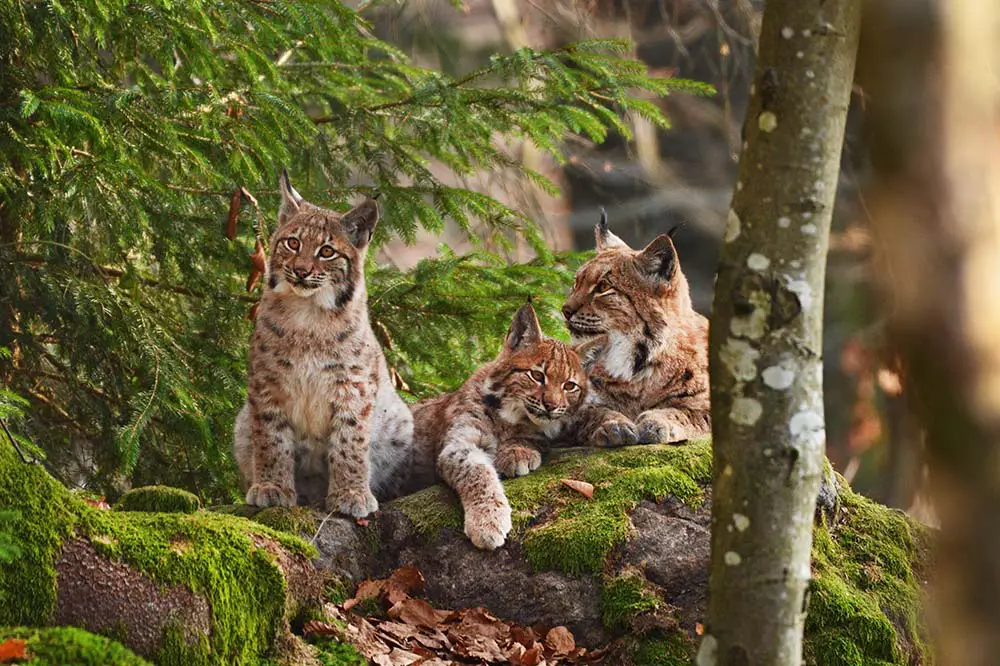
11 – Vatnajökull National Park, Iceland
One park that has even more ice-cold water is located in Iceland and covers over 13% of the country. Vatnajökull National Park was established relatively recently, in 2008 and was also inscribed as a UNESCO World Heritage Site in 2019. Vatnajökull ice cap is the defining feature of the park; it is the largest in Europe and features a collection of spectacular output glaciers. There are many different types of glacier, including ice caps, but can be generally defined as a body of ice found on land that flows downhill under its own weight; they add mass at the top due to an accumulation of snow over long periods of time and lose mass from glacial melt at the bottom. What makes Vatnajökull so unique is the addition of volcanic activity. The national park is home to ten volcanoes, eight of which are classed as subglacial, positioned underneath the ice cap. The heat generated by these volcanoes, most forcefully during an eruption, creates glacial outburst floods that dump water into the surrounding plains. There are many other fascinating features at Vatnajökull including ice caves, waterfalls and lakes.

12 – Lake District National Park, UK
A short hop across the Atlantic Ocean takes us to our next stop in objectively the most beautiful country on earth, England! Although this fact may not be entirely true, the landscape at Lake District National Park is the definition of British countryside and when it’s not raining, is pretty special. The reflection of the colourful glaciated valleys of the region can be seen in the park’s many picturesque lakes, the largest of which is Lake Windermere, which is also the largest natural lake in England. These hillsides are home to an agro-pastoral land-use system that sees individual fields separated by stone walls. Lake District National Park is also home to the highest mountain in England, Scafell Pike, which stands a fraction below 1,000 metres (978 m / 3,209 ft) and looks out over the surrounding countryside. Some of the park’s most loveable wildlife includes Eurasian otters, which enjoy the waterways of the park, and red foxes who usually mate during the winter and give birth to an average of 5 kits during the spring.
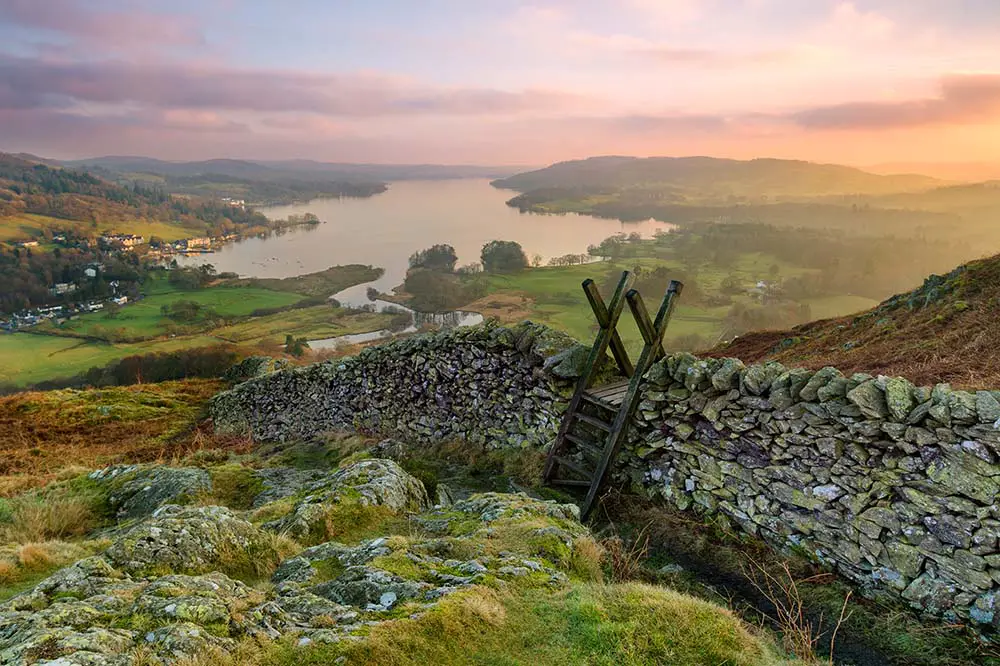
13 – Abisko National Park, Sweden
I like to think of Scandinavia as Europe’s Canada. Most of the large cities are located in the south and further north lies vast expanses of snowy wilderness packed full of interesting animals and experiences. Sweden’s Abisko National Park is one such wilderness found in the heart of Skandanavia’s legendary Lapland, which is now referred to by its indigenous name Sápmi. It is the only national park on our list that sits inside the Arctic Circle. In the summer, the park experiences days without a sunset known as midnight sun and in winter, experiences days without a sunrise known as polar night. Although the climate here can be harsh, the landscape is by no means bleak and is home to some incredible wildlife. The area’s history is closely tied between the Sami people and the herds of wild reindeer, known in North America as caribou, who roam the tundra in search of food. Other animals include moose, who inhabit the park during the winter months as well as arctic foxes and bears. Abisko is commonly cited as one of the best places in the world to watch aurora borealis, more commonly known as the Northern Lights. This natural phenomenon occurs when charged particles collide with gases in the earth’s atmosphere producing billions of tiny flashes that appear as waves of colour in the night sky. This only occurs in polar regions as the earth’s magnetic field directs the charged particles towards the poles.

14 – Calanques National Park, France
Heading southeast, the turquoise coastline of the Mediterranean plays host to our last stop in Europe, located in the south of France. Calanques National Park is one of the newest national parks in France, having only been created in 2012. The word Calanque comes from two words in the local dialect; calo, meaning “small rocky cove” and anca, meaning steep slope. Calanques are found all along France’s southern coastline but nowhere better exhibits these incredible geological structures than the 20km stretch east of Cassis towards Marseille, which is all included in the national park. As such, they are often referred to as the creeks of Marseille. The rock here is mostly white limestone, which contrasts sharply with the myriad shades of blue from the Mediterranean Sea. The park includes more than just these coves, stretching further inland and out to sea. The ocean life here is as diverse as you would expect from such pristine waters and includes dolphins and whales. Interestingly, there are four species of dolphin in the Mediterranean; common, striped, Risso’s and bottlenose.

15 – Göreme National Park, Turkey
Our first national park in Asia is also our first with man-made features and can be found in the province of Cappadocia in central Turkey. The landscape at Göreme National Park was created over millions of years as the soft volcanic rock of the Anatolian Plateau eroded away creating a multitude of formations including colourful ridgelines, intricate valleys with smooth wavy sides, and pinnacles known as hoodoos or fairy chimneys. What makes Göreme even more unique is a collection of hand-carved accommodations amounting to one of the largest cave-dwelling complexes in the world. There is evidence to suggest that the first dwellings were created around the 4th century BC, although most of the complex is thought to have been created during the reign of the Byzantine Empire starting in the 4th century AD. The cave system was used as refuge during times of invasion and also became an important centre for Christianity, exhibiting a collection of intricately decorated churches and monasteries. The final and most modern human spectacle at the park is the groups of hot air balloons that drift peacefully at sunrise as the golden sun breaks the horizon.
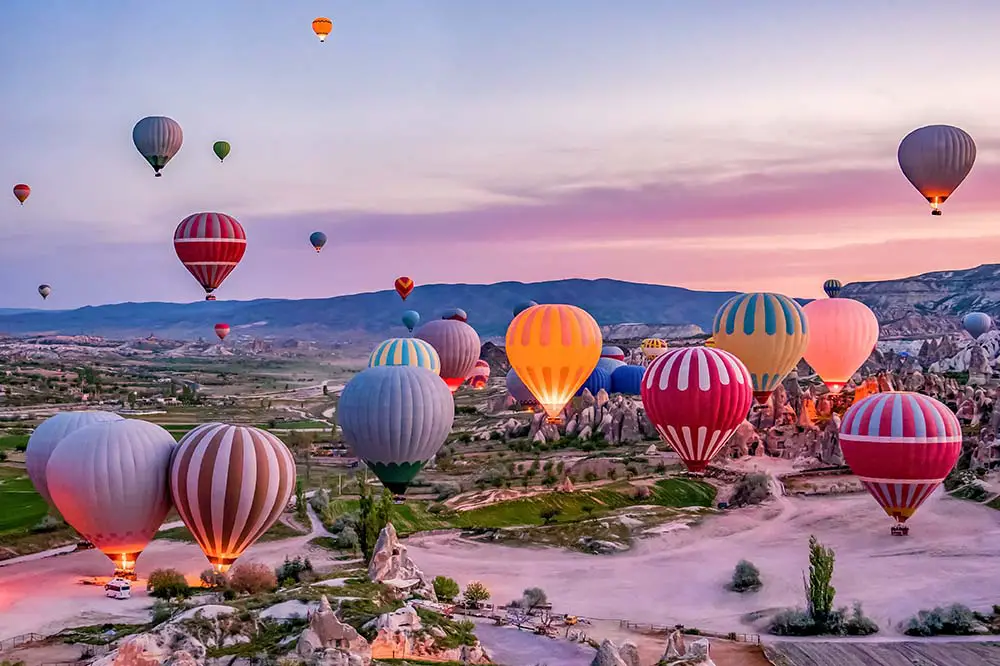
16 – Sagarmatha National Park, Nepal
The next stop on our world tour showcases perhaps the greatest geological formation on earth found in Nepal on its northern border with China. Sagarmatha National Park is home to the tallest mountain in the world, Mount Everest or Sagarmāthā in Nepalese, which stands at 8,848 m (29029 ft). This awe-inspiring peak has been the subject of mountaineering legend over the years; the first attempt at the summit was made by the British climber George Finch in 1922 but it wouldn’t be until 1953 that Tenzing Norgay from Nepal and Sir Edmund Hillary from New Zealand would successfully summit. The park contains numerous other epic peaks, glaciers and deep valleys lined with lush green forests. One of the world’s most elusive species, the snow leopard, can be found within the park’s boundaries where they enjoy the steep, rocky terrain. They prey primarily on blue sheep and will also hunt other bovids such as Tibetan antelope as well as smaller animals such as marmots, mice and birds. The lesser panda, also known as the red panda, is another species found in the park and throughout the Himalayas. They live in deciduous and coniferous forests between 2,200 to 4,800 m (7220 ft to 15750 ft).
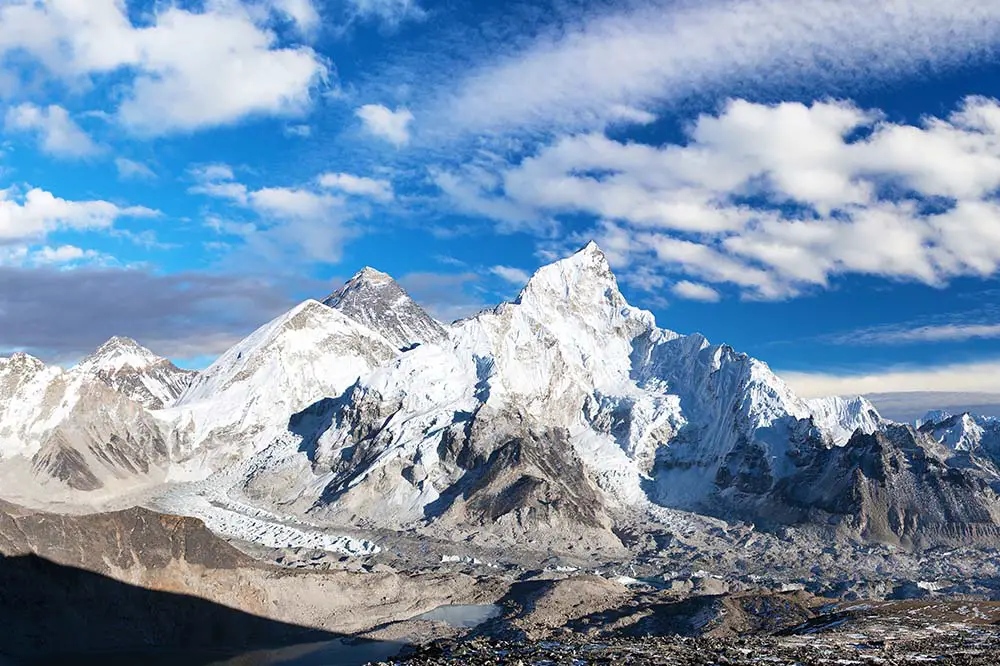
17 – Ranthambore National Park, India
Nepal borders India to the south, one of the most biodiverse countries on the planet with one of the most extensive national park systems. Ranthambore National Park in Rajasthan is one of the most well known and for good reason. The park is named after the historic Ranthambore Fort, which was built over centuries starting in 10th century A.D. and looks out over the surrounding forest. This forest is home to some of the most breathtaking wildlife on the planet including royal Bengal tigers, several species of deer, sloth bears and monkeys. The population of tigers in the park rose from 66 in 2019 to 81 in 2021, which has actually led to several tigers migrating outside of the park due to territorial disputes. The home range of a female tiger can range from 200 to 1,000 square kilometres, a male’s range can be 2 to 15 times that size. There are many species of ungulate that live in the forests here, which are preyed upon by the tigers. Species include the chital deer, which have a majestic rich brown coat with white spots with the males of the species displaying antlers. Sambar deer are also found in the park, they are much darker in colour and are also significantly larger with the biggest individuals weighing up to 570 lb (260 kg). Other interesting species include the sloth bear, which occasionally clash with the tigers and grey langurs, a species of old world monkey native to the Indian subcontinent.

18 – Gobi Gurvan Saikhan National Park, Mongolia
From one of the most biodiverse locations on the planet to one of the most inhospitable, our next stop is found 3000 km northeast in Southern Mongolia. Gobi Gurvan Saikhan National Park is Mongolia’s largest national park measuring 380 km wide and 80 km north to south. It showcases some of the best landscapes of the Gobi, one of the world’s largest deserts, that stretches from northern China to far-eastern Mongolia. The Khongoryn Els, also known as the singing dunes, are located within the park boundary and are some of Mongolia’s largest sand dunes, measuring up to 300 m high (990 ft). They bridge the gap between the fertile steppe and Gurvan Saikhan mountain range providing quite a striking contrast. Herds of horses can be found grazing the steppe here alongside the largest camel species, well equipped for the freezing nights of the Gobi. Bactrian camels have thick fur, helping them survive the freezing winter temperatures, which can reach -15°C to -30°C.

19 – Guilin and Lijiang River National Park, China
To explore another karst landscape, we need to travel over 2,200 km south to a famous river scene in southern China. Guilin and Lijiang River National Park is one of the most recognisable scenes in Asia; like others previously discussed, the rock formations here were created over millions of years as the soluble limestone slowly eroded away leaving a large collection of white rock peaks covered with lush green foliage. These limestone peaks are home to over 20 large karst caves some of which look out over the city. Today, the picturesque Lijiang River, also known simply as Li River, winds its way through the city Guilin, it is regarded as one of the most beautiful areas in the country and even has its own saying, which translates to “Among all the mountains and waters, Guilin is the best”. One of the most amazing scenes from this area are fishermen, who use an ancient method of fishing known as cormorant fishing, which dates back 1300 years; the fishermen use trained cormorants to retrieve fish, which are then regurgitated once back at the boat. The cormorants are most hungry at dawn and dusk and thus when most of this fishing takes place. Nowadays, these traditional fishing practices have been replaced by more modern methods but it is still upheld by those passionate about the craft in Guilin.
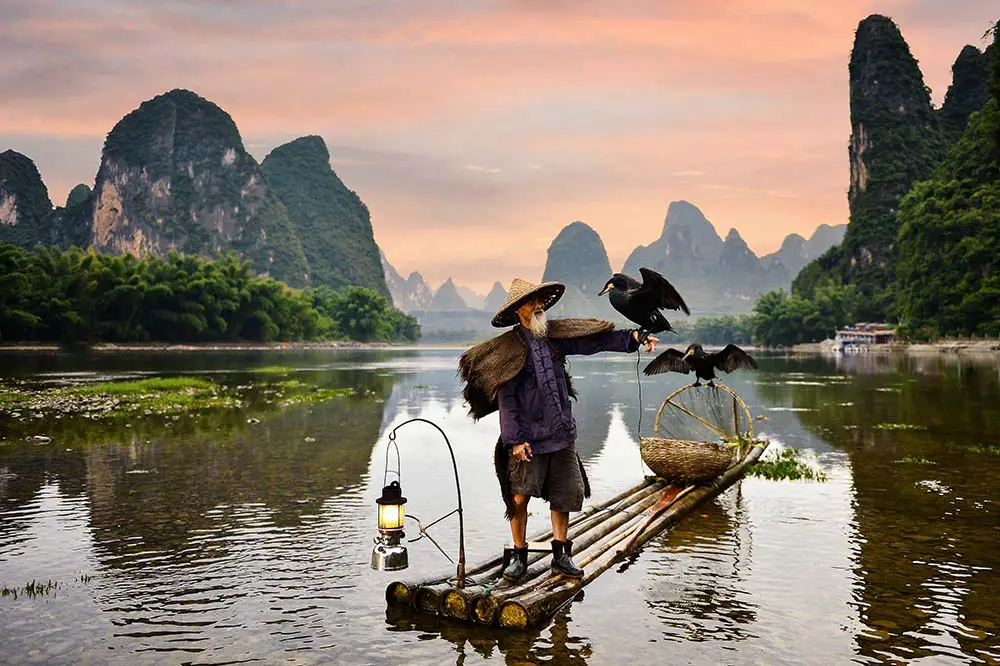
20 – Fuji Hakone Izu National Park, Japan
Another of Asia’s most revered countries is Japan, and no park is more emblematic than our next stop just outside of Tokyo. Fuji Hakone Izu National Park sits under 100km from the centre of Tokyo and consists of three main elements; Mount Fuji and its surrounding area, a nearby town named Hakone & the Izu peninsula and nearby islands. Mount Fuji serves as the centrepiece and can be seen on the skyline from some of the park’s more distant elements. Fuji is a composite or stratovolcano, meaning their lower slopes rise gently to begin with and peak in a steep concave fashion towards the top. Although Mount Fuji isn’t close to being one of the tallest or most active, it certainly is one of the most iconic; Chureito Pagoda sits just outside of the park but is one of the most well-known in the area and has unbelievable views of Mount Fuji, especially when the cherry trees blossom. There are 5 large lakes that sit at the foothills of the volcano named Fuji Five Lakes and are included in the park boundary. The Hakone area sits southeast of Mount Fuji and is another area well known for its volcanicity and resulting hot springs and sulphur vents, where volcanic gases escape from the ground along with groundwater steam. The Izu peninsula and Izu islands are the southernmost elements of the park, extending into the north pacific.
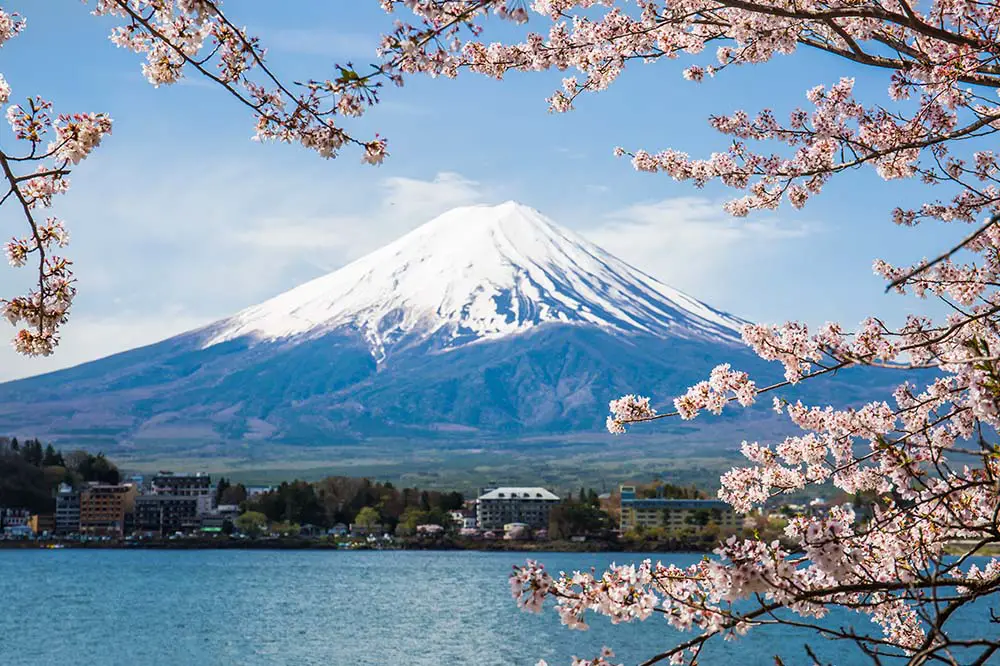
21 – Hundred Islands National Park, Philippines
The first of three national parks we’ll explore in Southeast Asia is found across the Philippine Sea on the main island of Luzon. Hundred Islands National Park is made up of over 120 picture-perfect islands, only 4 of which are inhabited. These islands are thought to be around 2 million years old and, in fact, are ancient corals that are part of the sea bed. As ocean levels dropped, these corals became exposed and grew vegetation, producing the collection of picturesque islands we see today. The islands all have an interesting mushroom shape thanks to many years of erosion from the crashing waves of the ocean. A study conducted in 2010 sought to assess the wildlife found on the islands and in the adjacent Lingayen Gulf; green sea turtles are one of three species of turtle found in the park along with Olive Ridley turtles and one species of red turtle. Dugongs also abide here, they are the closest living relatives to manatees who are found in the Americas and the west coast of Africa. On land, spotted house geckos were found on one of the larger islands along with the skull of a long-tailed macaque also known as the crab-eating macaque who are found throughout much of southeast Asia.
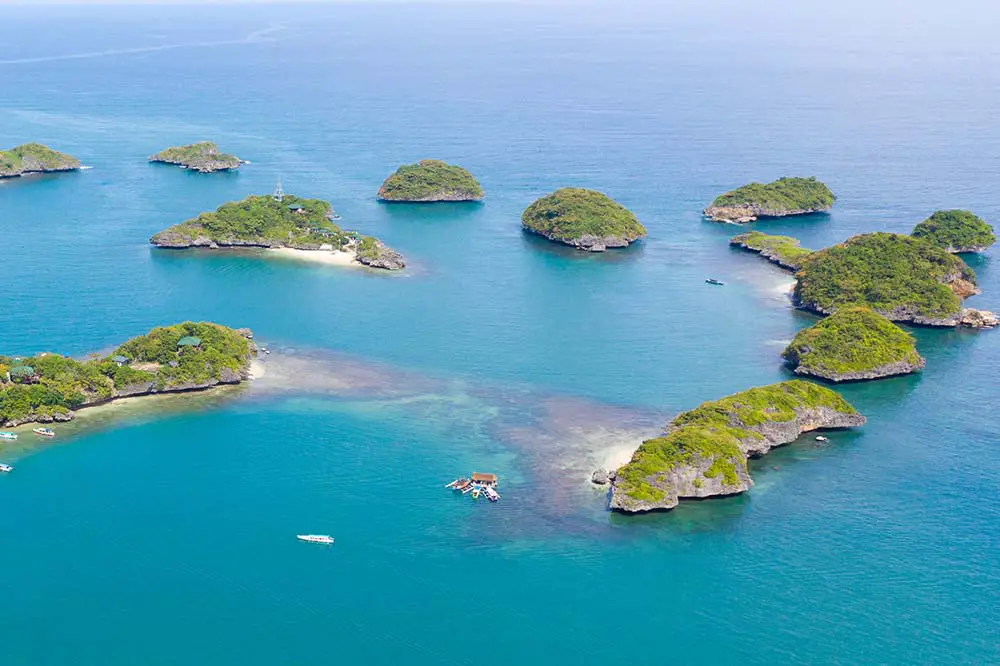
22 – Khao Sok National Park, Thailand
Thailand is located on the other side of the South China Sea and owns a beautiful piece of land named the Kra Isthmus. Khao Sok National Park offers yet another landscape crafted from the erosion of limestone and is touted as containing one of the oldest evergreen rainforests in the world. By far the most recognisable section of the park is a large lake that sits in the centre of the surrounding rainforest. Here the tall limestone peaks covered in lush green vegetation tower over the turquoise waters. The rainforest visible from the lake extends 10-20 km further south and is home to one of the world’s largest flowers, Rafflesia kerrii. The Rafflesia genus contains the largest flowers in the world, a specimen of this particular species was measured at 112 cm (44 in) in 2007. They omit a horrendous stench, which is similar to that of rotten mean and attracts flies who assist with pollination. As you would expect from such pristine rainforest, the fauna of the park is equally impressive; insects include the jewel beetle, of which there are over 300 species that display a range of vibrant colours. Bird species include several types of hornbill and 12 species of kingfisher including the white-throated kingfisher.

23 – Bromo Tengger Semeru National Park, Indonesia
The Greater Sunda Islands are found south of Thailand and include Java, the 13th largest island in the world. Its topography and landscape are dominated by a row of volcanos that run from one end of the island to the other. The largest of these volcanoes is Semeru, which is also the largest volcano in Indonesia at just over 12,000 ft (12,060 ft / 3,676 m). It towers over the Tengger caldera, a huge ancient volcanic crater from which several newer volcanoes have emerged, one of which is Mount Bromo. Together, these three elements make up Indonesia’s Bromo Tengger Semeru National Park. Although Mount Bromo is not the largest, it is arguably the most iconic, often displaying sizable plumes of smoke from its caldera. At the foot of Mount Bromo lies the floor of the Tengger caldera, an area which is covered in volcanic sediment and known as the Tengger sand sea. The surrounding rainforest can be best described as wild, with several interesting species including the Javan leopard and the Javan rusa, a close relative to the Sambar deer we discovered in Ranthambore.
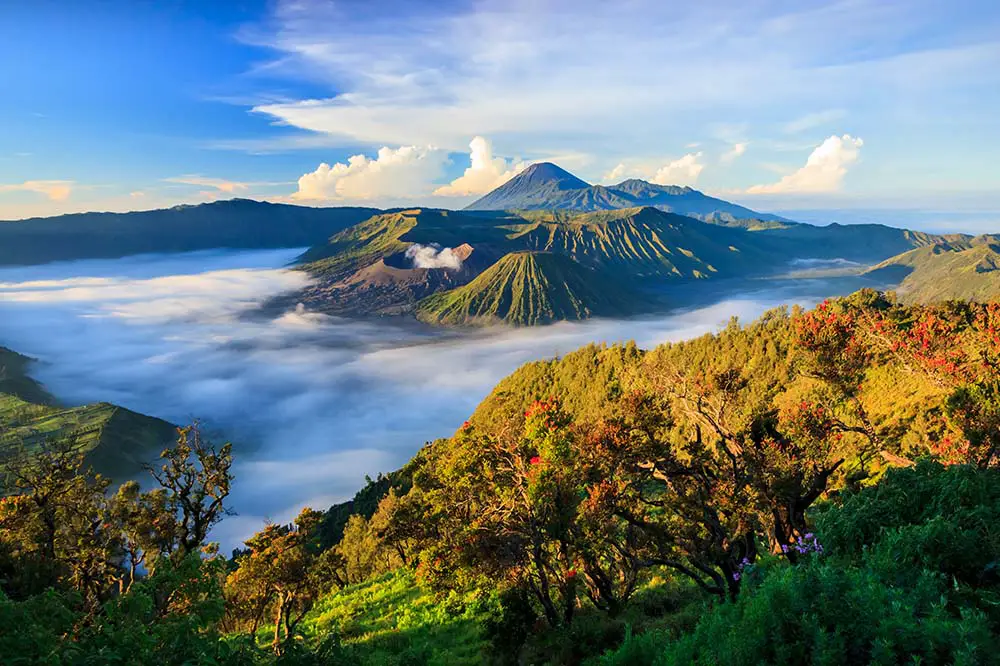
24 – Uluru-Kata Tjuta National Park, Australia
Another national park named after multiple individual elements is located 2,500 km southeast in the middle of the Australian outback. Uluru-Kata Tjuta National Park features two large rock formations, both of which are immensely important to the Anangu people who have inhabited the area for tens of thousands of years. Uluru, formally known as Ayers Rock, is a gigantic sandstone monolith thought to be roughly half a billion years old that stands at a height of 348 m (1142 ft) and has a circumference of 9.4 km (5.8 mi). 32 km west of Uluru sits a collection of rock domes named Kata Tjuta, formally known as The Olgas. The largest of these domes has a prominence of 546 m (1,791 ft) making it almost 200m taller than Uluru. The wildlife in the park is quite unique given this desert environment. There are many colourful bird species such as the red-capped robin and the Australian Ringneck parrot, which can grow up to 38 cm (15 in) in length. The reptiles of the park include the three-lined knob-tailed gecko and the colourful woma python, which is non-venomous and preys on lizards, ground birds and small mammals.

25 – Fiordland National Park, New Zealand
The Tasman Sea separates Australia from New Zealand where exists a forest fit for a Hollywood blockbuster. Fiordland National Park is known for its fjords and sounds, in particular, Milford Sound, which is located at the northern end of the park and is known for its stunning peaceful views. Both of these geographic features are created when seawater fills a valley that stretches inland from the ocean. Fjords are always created by glaciers whereas the term sound is often used to denote valleys created by rivers instead. The forests of the park were used as one of the filming locations for Lord of the Rings with their moss-covered trees and forest floor creating the magical landscape for the film’s Fangorn Forest. There are two particularly interesting species of alpine bird that live in the park; the takahe is found in alpine grasslands and subalpine shrublands, they are flightless and have an iridescent plumage with hues not too dissimilar to that of a peacock. The kea is another alpine bird found on the south island, in the winter they live at lower elevations but can be found in the alpine tundra in the warmer parts of the year. They are considered to be the only alpine species of parrot in the world and have especially colourful underwings with shades of red and yellow.

26 – Rapa Nui National Park, Chile
The Pacific Ocean is the largest ocean in the world and plays host to one of the most isolated national parks. Rapa Nui National Park is located almost 4,000km from mainland Chile and is best known for its collection of hand-carved monoliths. It is thought that the Polynesians first settled in Rapa Nui, known in English as Easter Island, towards the end of the first millennium A.D. Some 900 monoliths, known as moai, were hand-carved between the 10th and 16th centuries and transported to various spots around the island, the majority of which are located around the island’s rugged coastline. Some of these moai rest on their own or in groups and others are lined up on ceremonial platforms known as Ahu. Aside from its man-made features, the island is fascinating in its own right with many volcanic features such as Rano Kao, a volcanic crater found on the southwest of the island. The crater features a lake in its centre and steep walls that drop into the sea on its southwestern side. Although the island is relatively small and doesn’t exhibit any particularly large wildlife, there are several interesting species. The red-tailed tropicbird is one such creature and is named so for its elegant red tail streamer, which on average, is over 30 cm long (35 cm / 14 in).

27 – Manuel Antonio National Park, Costa Rica
Costa Rica is the first of three countries we’ll explore in Central America and is not too far from our first stop in the Galapagos. Even though Manuel Antonio National Park is the country’s smallest, it is one of the most biologically diverse parks on this list and is home to some of the most interesting wildlife. It is situated in the centre of the country’s west coast and in addition to just over 12 sq km (7.7 sq mi) of rainforest, the park also contains several beaches that flank a spine connecting what was previously an island and features a section of cliffs that drops to the clear blue ocean below. One of the most interesting lizards in the park is the basilisk, also known as the Jesus Christ lizard for its ability to run 10-20 metres across a body of water. There are many species of monkey found in the treetops here including capuchins and the Central American squirrel monkey, also known as the red-backed squirrel monkey. Sloths can also be found relaxing in the treetops, both the brown-throated three-toed sloth and Hoffmann’s two-toed sloth are found inside the park boundaries. There are almost 200 species of birds in the park including the charming hummingbird and the colourful American pygmy kingfisher, which weighs just 10–16 g (0.35–0.56 oz).

28 – Tikal National Park, Guatemala
Another great example of Central American rainforest is found 1,000 km northwest but contains a mysterious twist. Tikal National Park in Guatemala is the first of two we’ll explore that exhibit some of the most fascinating ruins of the Maya civilization. This particular set of ruins is found deep in the Guatemalan jungle and makes up just a small fraction of the surrounding national park. The site is thought to have been inhabited from the 6th century BC to the 10th century AD, which spans both their pre-classical and classical periods. The Temple of the Great Jaguar is one of the most famous of the ruins here and stands at a height of 47 m (154 ft) sporting views over the jungle canopy. This national park is also a UNESCO world heritage site, inscribed not only to protect the cultural elements of the park but also the biodiversity of the surrounding rainforest. There are 5 feline species found within the park; the margay, jaguars, pumas, ocelots and the jaguarundi. One bird species, in particular, frequents the ruins of Tikal, the wild ocellated turkey. They are named so for the spots on their tail known as ocelli and also have bright blue faces with orange nodules, which are present to a greater degree in males.

29 – Tulum National Park, Mexico
Northeast of Tikal, Mexico’s Yucatan peninsula contains a stretch of idyllic Caribbean coastline and our next set of Mayan ruins. The ruins in Mexico’s Tulum National Park were built much later than those in Tikal. This picturesque ancient seaside city would reach its height between the 13th and 15th centuries in the period leading up to Spanish colonisation. There are several structures of note, including a pyramid named El Castillo, which is 7.5 m (25 ft) tall and sits on the cliff overlooking the sea. In addition to the ruins, Tulum National Park features a spectacular tropical coastline, a stretch of forest and several cenotes. Cenotes are sinkholes, created when the soluble limestone collapses and is filled with groundwater. These formations are dotted all over the Yucatan peninsula and can be quite intricate. They were important to the Mayans both as a source of fresh water and were of great spiritual significance. There are also many interesting species here such as the Central American agouti, a rodent found in Central and South America.
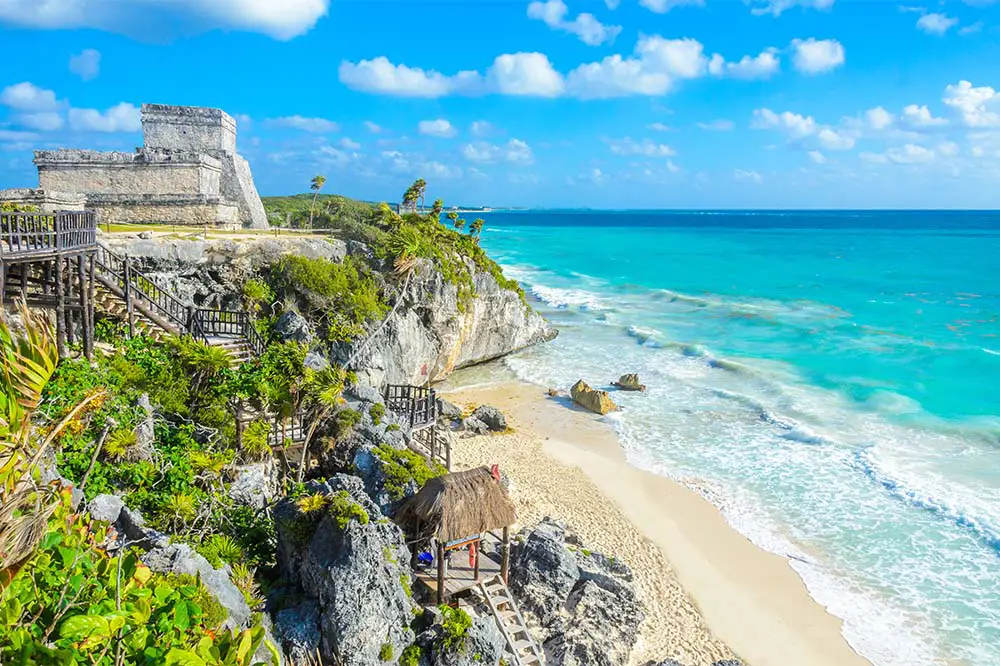
30 – Jasper National Park, Canada
The Rocky Mountains run from New Mexico in the south and into Canada in the north, where a contiguous collection of national parks can be found. Jasper National Park is the largest of the national parks in the Canadian Rockies, which collectively were inscribed as the Canadian Rocky Mountain Parks UNESCO World Heritage Site in 1984. The mountain landscape here is breathtaking, with dramatic slabs of rock rising from the forest floor. At the southern end of the park sits the Columbia Icefield, the largest icefield in the Columbia Rockies. The Athabasca Glacier is the most well-known section of this icefield, it is quite intricate and features a collection of electric blue ice caves. The water from this mountain drains into the Athabasca River which flows north into the main body of the park and has, over time, eroded the bedrock to create many beautiful canyons and waterfalls. Running parallel to Athabasca River is Maligne River, which features one of the most recognisable lakes in all of North America, Maligne Lake. In addition to its geological features, Jasper National Park was also founded to protect the diverse collection of wildlife that exists within its boundaries. One of the animals most at threat is the caribou, whose numbers are too low to be maintained on their own and are currently being rebuilt by Parks Canada. There are many other species that roam the forests here including mountain goats and wolverines who are one of the largest mustelids, weighing up to 30 kg (66 lb).
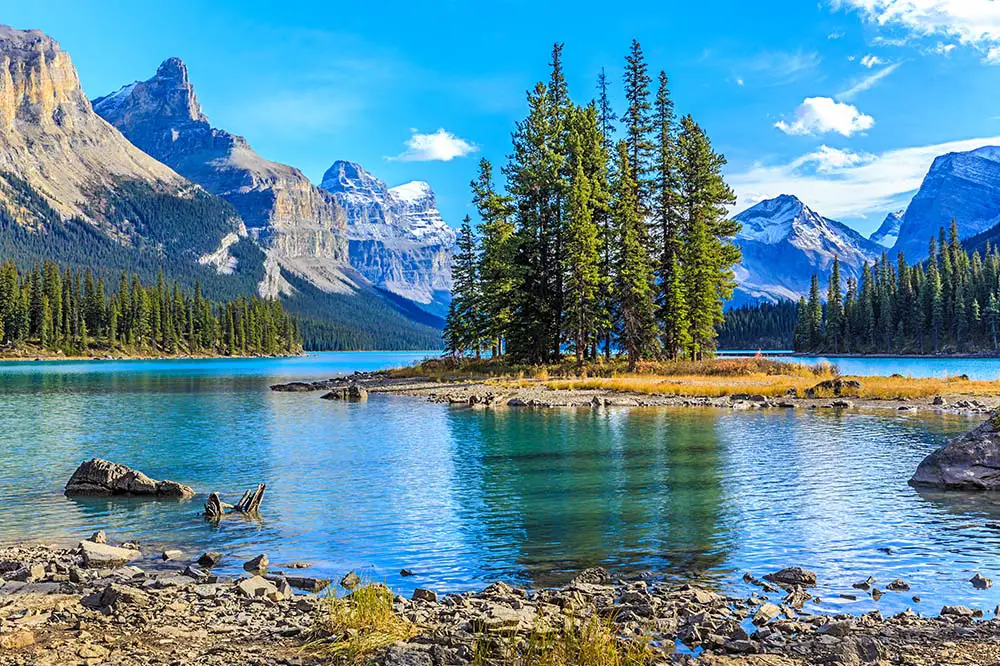
There is of course one country omitted from this video that contains one of the most incredible national park systems in the world. If you’d like to learn more about the national parks in the United States, check out this video, the first in a three-part series covering all 63 of the country’s wonderful national parks.
Sources
UNESCO, Encyclopaedia Britannica, Wikipedia, Animal Diversity, IUCN Red List, Plitvice Lakes National Park, Galapagos currents, ocean currents, Pantanal, wetlands, Los Glaciares, Virunga, gorilla social groups, gorilla social structure, Kruger, animal gestation period, Simien Mountains, Timanfaya Spain tourism, Timanfaya Lanzarote Tourism, Timanfaya tours, Timanfaya info, karst landscape, Bavarian Forest National Park, Vatnajökull glaciers, Vatnajökull ice cap, largest glaciers, ice caps, Lake District, Abisko, northern lights, Marseille tourism, Calanque geology, whales in the med, Göreme, Ranthambore, Rajasthan tiger population, Gurvan Saikhan, Khongoryn Els, Gobi desert, cormorant fishing, stratovolcanoes, sulphur steam vents, Khao Sok, Rafflesia flowers, hundred islands, hundred islands guide, hundred islands animal study, Bromo Tengger Semeru, Uluru-Kata Tjuta, Fiordland, Lord of the Rings, fjords and sounds, fjords, Manuel Antonio, Manuel Antonio guide, Tikal, Tulum, cenotes, Jasper, Travel Alberta
